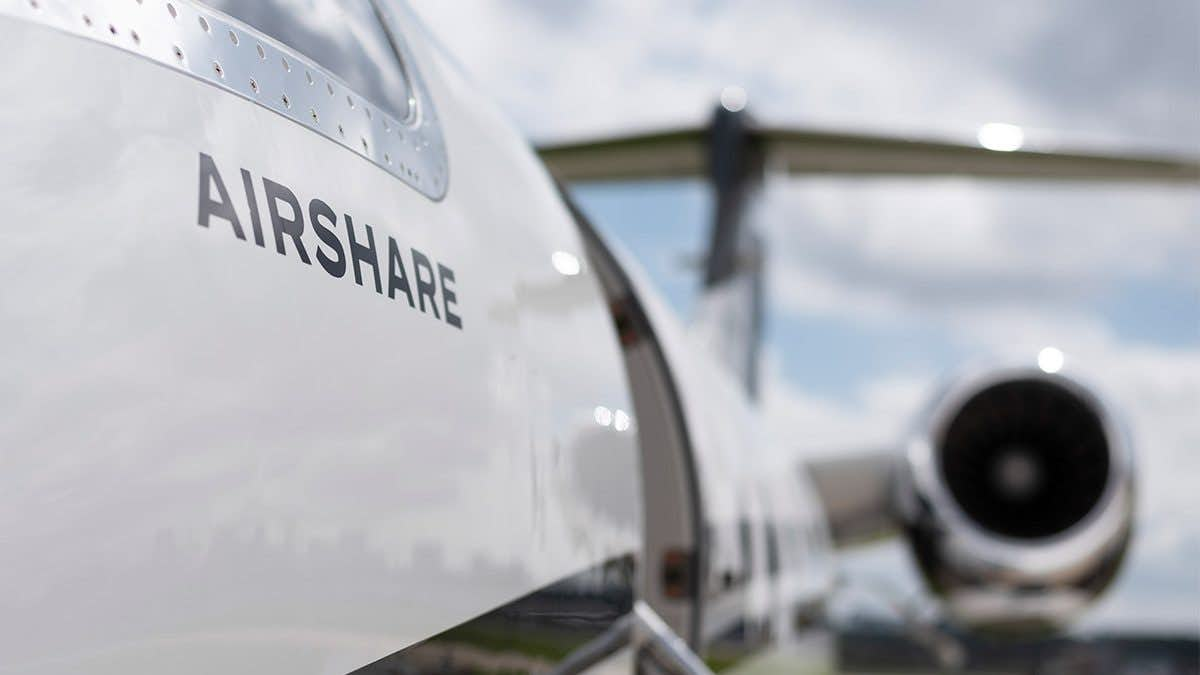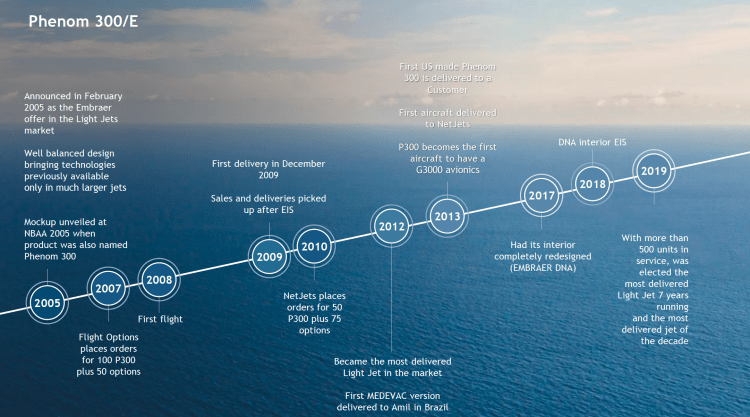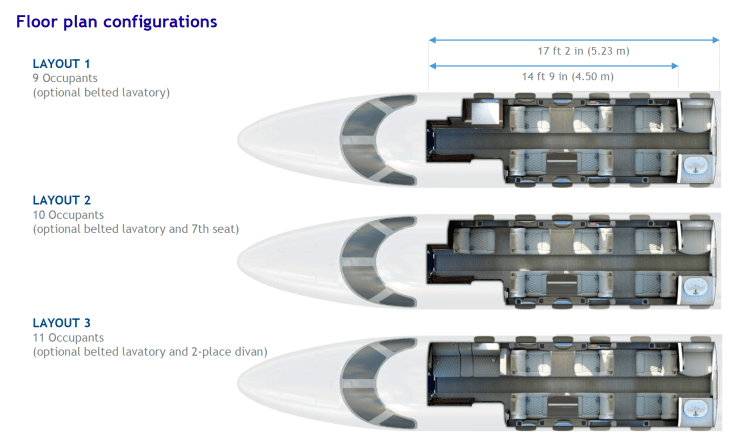

The Phenom 300 and its updated brother, the Phenom 300E, are the best selling light jet type in the past decade.
It is popular with individual owners, and also fractional share and charter fleet operators selling jet cards. It has a high resale value – if you can buy one. There are only 16 on the market. That’s a mere 3.6% of the fleet.
The list of operators is a who’s who, including the industry’s biggest players. NetJets and Flexjet agree on few things. They both selected the Phenom 300 as their core light jet option.
Airshare and Nicholas Air, like the big two, offer the Phenom 300 in their fractional programs and in jet card form.
Then you have JetSuite and GrandView Aviation, both own and operate the Phenom 300, selling jet cards and on-demand charter. Clay Lacy Aviation offers a managed Phenom 300 in its Clay Lacy Preferred program as available with roundtrip pricing.
You also have brokers with fixed-rate, guaranteed availability Phenom 300 membership cards, including Alliance Aviation, Magellan Jets, and OneFlight.
There’s possibly more coming. Sentient Jet has hinted at new products this year, including aircraft-specific cards in addition to categories. Nobody will be surprised if they launch a Phenom 300 jet card.
In case you’re counting, there are 10 different options to buy a Phenom 300 jet card and four fractional choices, more than any other aircraft in any size category on the market.
In other words, the light jet’s popularity extends well beyond individual owners and corporate flight departments.
The numbers don’t end there.
In Business Jet Traveler’s 2019 Annual Reader Survey the Phenom 300 dominated the light jet category as favored aircraft type taking 40% of the vote, doubling the second place Citation CJ4 (20%) and the buzzy Pilatus PC-24 (19%). It has been the top vote-getter in its league for at least the last six years.
You might ask what has made the Phenom 300 so popular for so long?
Alvadi Serpa, director of product strategy for Embraer Executive Jets explains the success.
He says, “It starts with the ramp presence. It’s sexy.” After that, he points to the door. “It’s not a light jet door,” he says.
He adds the stairs are “sturdy” and the railing gives it a feeling of a large cabin jet.
Next is the shape. It’s oval instead of round. This means more legroom. Seats are lower, which provides more headroom. It has the largest windows amongst light jets.
Its range with three passengers allows flying from Fort Lauderdale (above) to Aspen. Going east you can fly nonstop from Las Vegas to the entire East Coast. From Van Nuys (below), you can go nonstop to Jacksonville and even Toronto.
There’s also lots of baggage space to fit golf clubs and skis.
“it’s a big airplane packed into a small box with all the features of a big private jet,” Serpa says.
Both the 300 and its very light jet cousin the Phenom 100 were announced at the same time in 2005.
Powered by VLJ-hype of that period, the Phenom 100 was so strongly outperforming the 300, at the time there were internal discussions about whether Embraer had made a mistake with its bigger airplane.
Needless to say, it’s a good thing they left well enough alone.
But here’s the big question I often get from subscribers of this site about the Phenom 300. With configurations ranging from six to nine seats, do some versions have more legroom than the others?
Since time is money, and I value your time, the short answer is no.
If you are interested in how you can have one version with 50% more passenger seats and the same legroom read on.
When airlines add seats, it typically means less legroom. That’s not the case here.
All Phenom 300 versions have four facing seats in a 1 by 1 layout, and then two seats behind in a 1 x 1 forward-facing configuration. Behind them is the lav with window and hard door.
Between each pair of facing seats, there is the typical pullout table.
In some cases, one seat is a belted lav, not optimal, but for a short flight, an option. To be able to sell that seat, it means the operator has an oxygen mask there.
So if you consider the six seats as described above and add a belted lav seat, you get a seven-seat option.
However, there are also seven-seat options with all seven seats in the passenger cabin compartment. In this case, when you enter the aircraft on the opposite side is a single rear-facing club seat.
So as a recap, one far forward single rear-facing seat, the four facing seats in a 1 by 1 arrangement, and then the two forward-facing single seats.
To this configuration with seven seats, some operators such as Airshare have a belted lav providing capacity for eight passengers.
Next is a configuration with eight seats in the cabin. Instead of the single rear-facing seat in the forward part of the cabin, there is a two-seat divan.
The divan is quite comfortable, although I would only recommend it for children or those of you not of great height. When I sat in it, at 5 ft, 10.5 inches, the back of my head was pillowed by the curvature of the cabin.
Add a belted lav, like Nicholas Air, and you have a long-range light jet that can seat up to nine passengers.
When operators add either the forward single seat or the two-seat divan, it comes out of an area used for storage and catering.
That’s good news because regardless of layout, the four facing seats and the rear row of seats 1 by 1 have the exact same legroom.
In other words, you’re not getting scrunched and you don’t have to worry about having less personal space.
The different seating options make comparing Phenom 300 pricing a bit more tricky.
You have on one end the six-seat NetJets configuration while on the other side is Nicholas Air, which uses the nine-seat option with belted lav and divan.
Operators like Flexjet have a mix of layouts. So, it’s important to understand the seating guarantee either via a broker or if your program operator has multiple configurations.
Jet cards on the Phenom 300 price more closely to typical midsize aircraft jet cards than light jets.
Add 7.5% Federal Excise Tax and fuel surcharges as applicable, and you are looking at $7,000 to start for your hourly rate. You can get into the mid to low $6,000 range if you are buying lots of hours.
| Provider | Base Program | Pricing (including est. fuel and FET) |
| Airshare | 10 days | $76,620 + $2,847 per hour |
| Alliance Aviation | 25 hours | $7,520 per hour |
| Flexjet** | 25 hours | $9,261 per hour |
| JetSuite | $100,000 | $7,090 per hour |
| Magellan Jets | 25 hours | $7,199 per hour |
| Nicholas Air | 15 hours | $7,468 per hour |
| NetJets | 25 hours | $7,560 per hour |
| OneFlight | 25 hours | $6,981 per hour |
*Only includes programs with guaranteed availability and fixed one-way pricing. **Includes estimated fuel surcharge
Beyond the hourly rates, there are many program rules and policies to consider. Is deicing included? What are the daily minimums? How about peak day surcharges? What’s the lead-time for reservations and cancelations.
Self-promotion alert: An annual subscription of $250 to Private Jet Card Comparisons will enable you to quickly compare the Phenom 300 across all its providers by 65 different variables.
It should be noted, while the 300 is still be manufactured and delivered, new orders are only for the 300E.
Well, choosing to own versus a share, lease or jet card is going to come down to your flying needs, and how many hours per year you fly, and all of the normal inputs.
You shouldn’t let emotions impact a major financial decision, right?
Yesterday Embraer announced several enhancements, including cabin noise reduction, slightly faster-cruising speed, and increased range.
Along with a list of avionics improvements, including a runway overrun awareness and alerting system, that should help those of you who are left-brain dominant.
That said, Embraer’s new slick interiors (pictured in the introduction and above) for the Phenom 300E now allow owners the same design options as its Praetor 500 and Praetor 600 midsize and super-midsize jets.
For those of you with even a bit of right-brain impulse, the aesthetics are impressive for a light jet, much more what you would expect stepping onto somebody’s private Gulfstream G650.
For that reason, some of the interiors with piano black finishes and the like are probably better suited for Part 91 operations as opposed to Part 135, as they are designed for private usage as opposed to the wear and tear of charter or fleet flying.
If you appreciate craftsmanship and beautiful design, I can see being swayed by the new interior options and performance to full ownership. After all, next to your home and office, your jet may be one of the places you spend a good chunk of your time.
The price for a new Phenom 300E is $9.65 million. Some of the chicest interior options can cost around $150,000 more.




